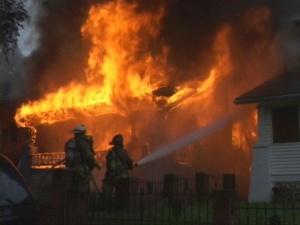
Wrightstyle is a specialist steel and aluminium glazing company and supplies its fire-rated systems internationally. Jane Embury, the company’s marketing director, looks at fires in factories and warehouses.
When 31-year-old Colin Goulding sneaked into a storeroom to have a cigarette, it turned into a nightmare for him, his family and work colleagues.
Goulding was working at a crisp factory in Crumlin, South Wales, and despite smoking being forbidden inside the building, he thought the storeroom would be safe enough.
But he discarded his cigarette in a hurry and it landed in a pile of crisp wrappers. The fire it started caused £25m of damage and cost 100 people their jobs, including Goulding’s parents who also worked at the factory.
The blaze took only ten minutes to engulf the factory. Earlier this year, Goulding was jailed for more than six years for starting what the judge described as the ‘most expensive arson he had ever seen.’
The Crumlin fire underlines two key aspects of fire safety in factories and warehouses. First, most fires start from the very smallest of causes, often an electrical short circuit or in this case, a lit cigarette. Second, given the right conditions, fire can spread extremely rapidly.
In the developed world, stringent fire regulations have hugely reduced the risk posed by fire, the Crumlin fire proves that not all risk can be eliminated, particularly if employees act with wilful intent or negligence.
In terms of loss of life, the worst recorded accidental factory fire was at the Kader Toy Factory in Thailand in 1993. Again, the initial fire was so insignificant that employees were told to continue working.
However, the facility was filled with highly flammable material and by the time an evacuation was ordered, it was too late. Making matters worse, fire exits shown on the building’s plans had not been built and external doors were locked. Many workers were trapped in the building. 188 people were killed, and more than 500 were left seriously injured.
Before the Kader Toy Factory fire, the world’s worst industrial fire had been the Triangle Shirtwaist Factory fire in New York, US, in 1911, a garment factory in a high-rise building.
It claimed 146 lives and was a catastrophe that directly led to new laws on fireproofing requirements, automatic sprinklers and the availability of fire extinguishers, as well as access and exit doors.
From a fire safety perspective, there are tragic similarities between the Kader and Triangle fires, despite the gap of more than 80 years between them; one taking place at a time of more rudimentary fire safety regulations while the other occurred in a developing country, where fire safety laws were simply not enforced.
For more information, please contact Wrightstyle.

